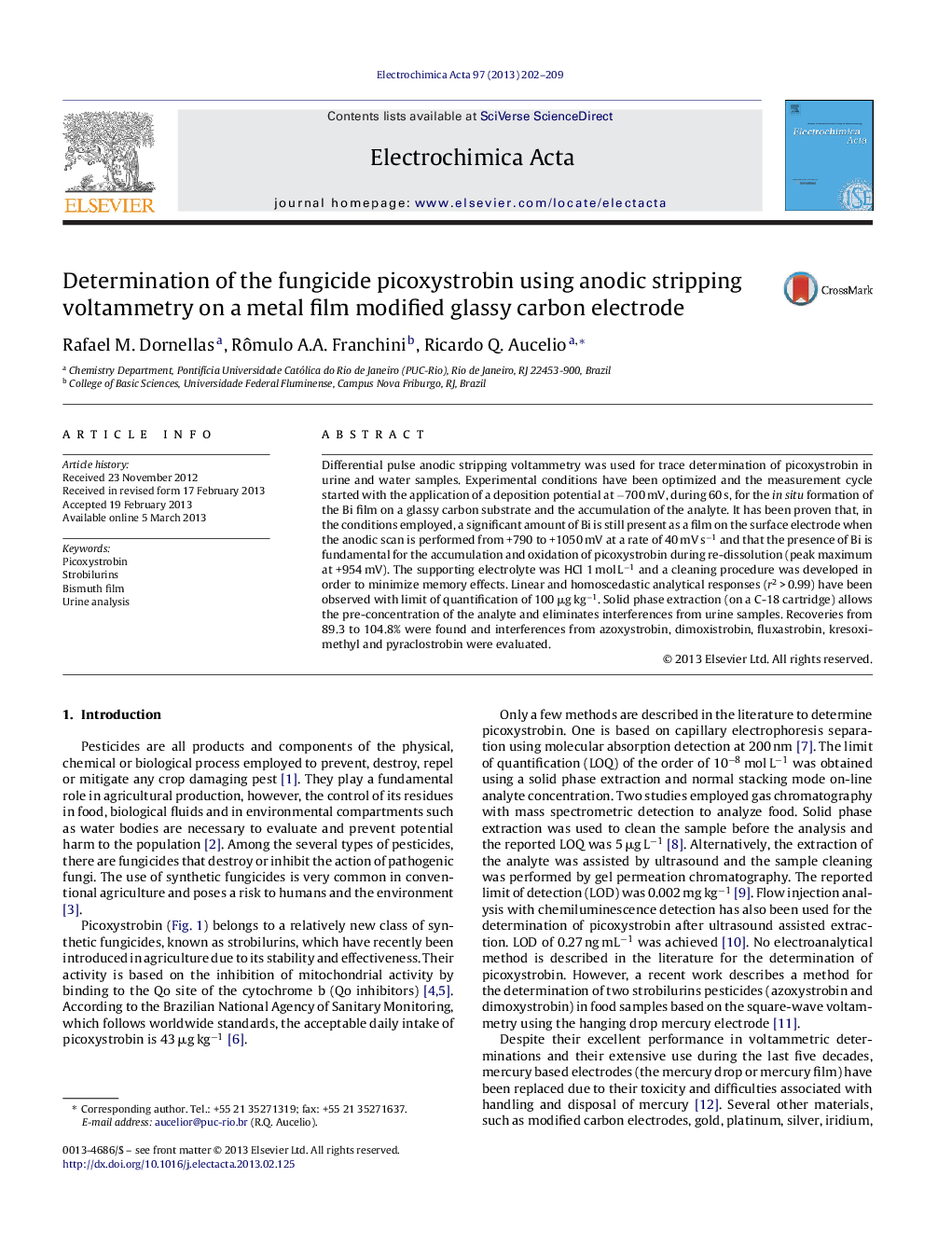| کد مقاله | کد نشریه | سال انتشار | مقاله انگلیسی | نسخه تمام متن |
|---|---|---|---|---|
| 186934 | 459628 | 2013 | 8 صفحه PDF | دانلود رایگان |

Differential pulse anodic stripping voltammetry was used for trace determination of picoxystrobin in urine and water samples. Experimental conditions have been optimized and the measurement cycle started with the application of a deposition potential at −700 mV, during 60 s, for the in situ formation of the Bi film on a glassy carbon substrate and the accumulation of the analyte. It has been proven that, in the conditions employed, a significant amount of Bi is still present as a film on the surface electrode when the anodic scan is performed from +790 to +1050 mV at a rate of 40 mV s−1 and that the presence of Bi is fundamental for the accumulation and oxidation of picoxystrobin during re-dissolution (peak maximum at +954 mV). The supporting electrolyte was HCl 1 mol L−1 and a cleaning procedure was developed in order to minimize memory effects. Linear and homoscedastic analytical responses (r2 > 0.99) have been observed with limit of quantification of 100 μg kg−1. Solid phase extraction (on a C-18 cartridge) allows the pre-concentration of the analyte and eliminates interferences from urine samples. Recoveries from 89.3 to 104.8% were found and interferences from azoxystrobin, dimoxistrobin, fluxastrobin, kresoxi-methyl and pyraclostrobin were evaluated.
Figure optionsDownload as PowerPoint slideHighlights
► Picoxystrobin was determined by adsorptive voltammetry in urine and water.
► Bi mediated the electrocatalysis of picoxyxtrobin.
► Bi film is proven to be at the surface of the GCE even when operating at positive potentials.
► Experimental conditions were adjusted for trace determination.
► SPE eliminated interferences from urine and pre-concentrated the analyte.
Journal: Electrochimica Acta - Volume 97, 1 May 2013, Pages 202–209